If you find yourself wondering whether it’s too late to plant potatoes, it’s important to consider some factors before making a decision. Because timing is crucial to ensure a successful harvest.
Read on to know three crucial factors that you should be aware of while determining whether or not to grow potatoes later. Also, we would discuss what happens if you plant potatoes too late and when to harvest them. So let’s start right away!
Contents
Is It Too Late To Plant Potatoes?
It may or may not be too late to plant seed potatoes, depending on various factors like your location, climate, and the specific variety of potatoes you intend to grow. However, before making a decision, it’s important to consider the following factors:
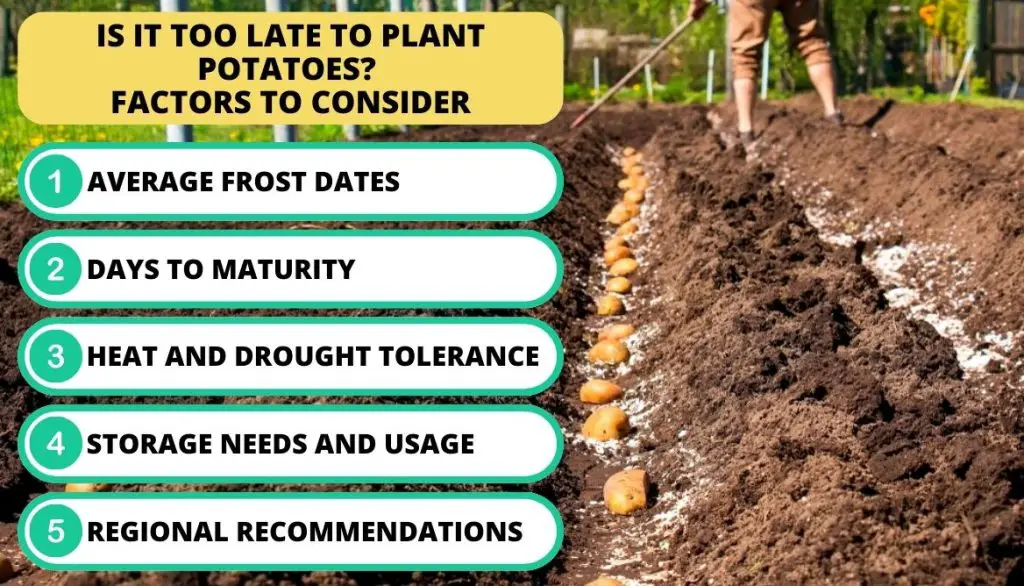
- Average Frost Dates: Check the average frost date in your area to determine if you have enough time for the potato seeds to mature before the first frost.
- Days to Maturity: Consider the specific variety of potatoes you plan to grow and their average days to maturity. This will help you gauge if there’s sufficient time left in the planting season.
- Heat and Drought Tolerance: Assess the heat and drought tolerance of the potato variety you intend to plant. Late plantings may encounter higher soil temperatures and dry conditions, so selecting a variety that can withstand these challenges is crucial.
- Storage Needs and Usage: Determine the intended use and storage requirements of your potato crop. If you’re primarily growing potatoes for fresh consumption or short-term storage, planting seed potatoes late may still be feasible.
- Regional Recommendations: Seek guidance from local agricultural extension offices, gardening clubs, or experienced gardeners in your region. They can provide valuable insights and specific recommendations for planting potatoes late in your area.
Can You Still Plant Potatoes In July?
Although April is often the best planting date, you can still do so in July depending on your area and unique circumstances.
Planting potatoes later in July has some disadvantages compared to planting them earlier in the season. Here are a few disadvantages:
- Reduced Yield Potential: Growing potatoes later in the season means a shorter growing period before the onset of cold weather. This can result in reduced yield potential as the potatoes planted may not have enough time to fully develop.
- Increased Risk of Disease and Pest Infestations: Late-planted potatoes are more susceptible to various diseases and pests. As the planting season progresses, the chances of encountering common potato pests such as Colorado potato beetles or diseases like late blight increase.
- Limited Variety Availability: Some potato varieties may have already sold out or be in limited supply by July. If you have specific potato varieties in mind, there might be fewer options available later in the season.
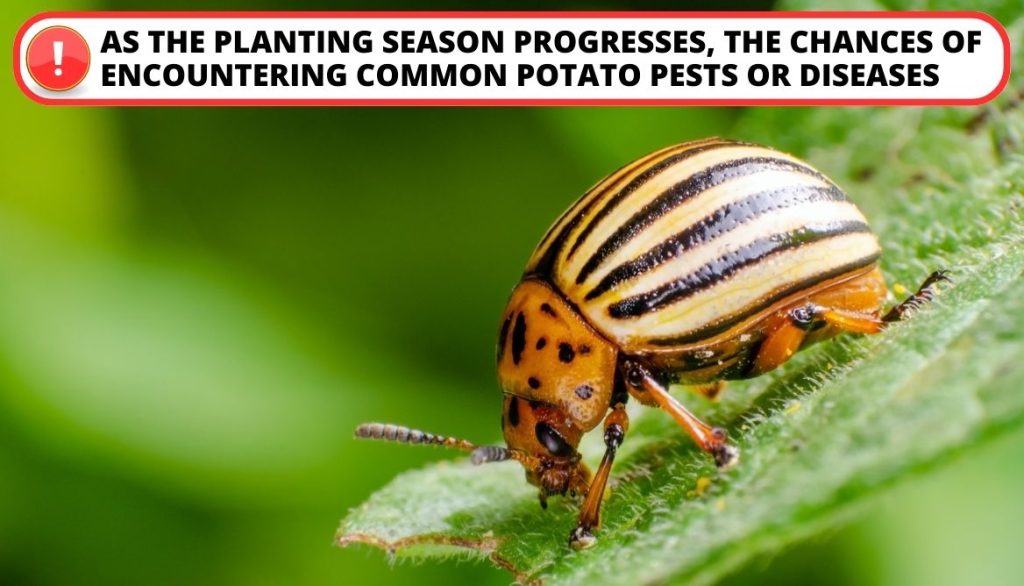
Despite these disadvantages, you can still reap the benefits of cultivating potatoes later in July by taking certain measures choosing early maturing varieties, proper planning techniques, and adequate maintenance. Some of these benefits include:
- Availability of Early-Maturing Varieties: Early-maturing potato varieties are designed to reach maturity quickly, allowing for a successful harvest even when planting in July.
- Reduced Risk of Late Spring Frosts: By planting later in the season, you can avoid the risk of late spring frosts that can damage or kill young potato plants.
- Lower Incidence of Some Pests and Diseases: Late-planted potatoes may encounter fewer problems with pests and diseases that peak earlier in the season.
- Longer Daylight Hours: Planting later in the summer provides longer daylight hours, contributing to better plant growth and potentially higher yields.
- Reduced Weed Competition: By planting later, you can avoid the initial flush of spring weeds, reducing competition for resources and benefiting potato growth.
- Potential Discounts on Seed Potatoes: Waiting until later in the season may result in discounted prices on seed potatoes, saving money on your planting.
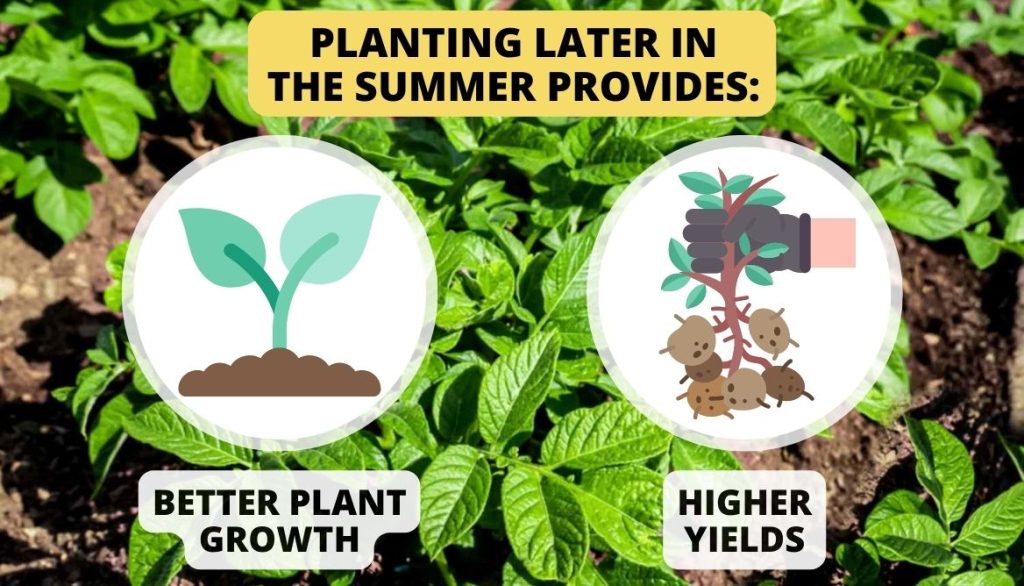
Examples of early-maturing potato varieties include:
- Yukon Gold: This popular variety is known for its yellow flesh and smooth texture. It matures relatively early and produces high yields.
- Red Norland: It is a versatile red-skinned potato that matures early and has good disease resistance.
- French Fingerling: These finger-shaped potatoes have a nutty flavor and are early maturing. They are often prized for their unique appearance.
- Kennebec: This variety has a smooth texture, thin skin, and good flavor. It matures early and is suitable for baking, boiling, or frying.
Is It Too Late To Plant Potatoes In August
In hotter climates, planting potatoes in August can be just as difficult as in July. On the other hand, with proper variety selection, soil preparation, irrigation, and pest management, you can still have a fall harvest and enjoy the same advantages as in July.
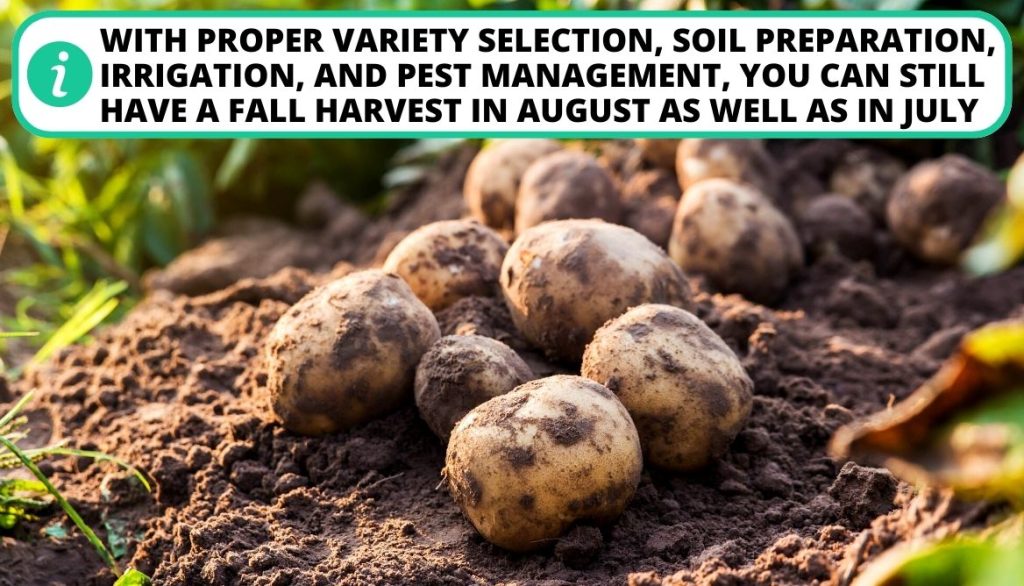
Can You Plant Potatoes In The Fall For Next Year?
For a harvest the next year, you can plant potatoes in the fall. This method is known as “fall planting” or “overwintering” potatoes. While it may not be as common as early spring planting, it offers several advantages and can be a successful way to ensure an early potato harvest in the next season.
Factors To Consider When Planting Late
When planting late, there are several factors to consider to ensure the success of your crops. These factors play a crucial role in determining the growth and harvest of plants. Let’s explore each factor in detail;
1. The Number of Days to Harvest
The number of days to harvest is an important consideration when planting potatoes late. Different crops have varying growth rates, so it’s crucial to choose potato varieties that can mature within the available time.
- Opt for early potato varieties like Yukon gold, and Kennebec, that can grow within a shorter period especially the ones with a maturity range of 70 to 90 days.
- These varieties have a better chance of producing a harvest. Consult reliable sources or seed potato packets for this information.
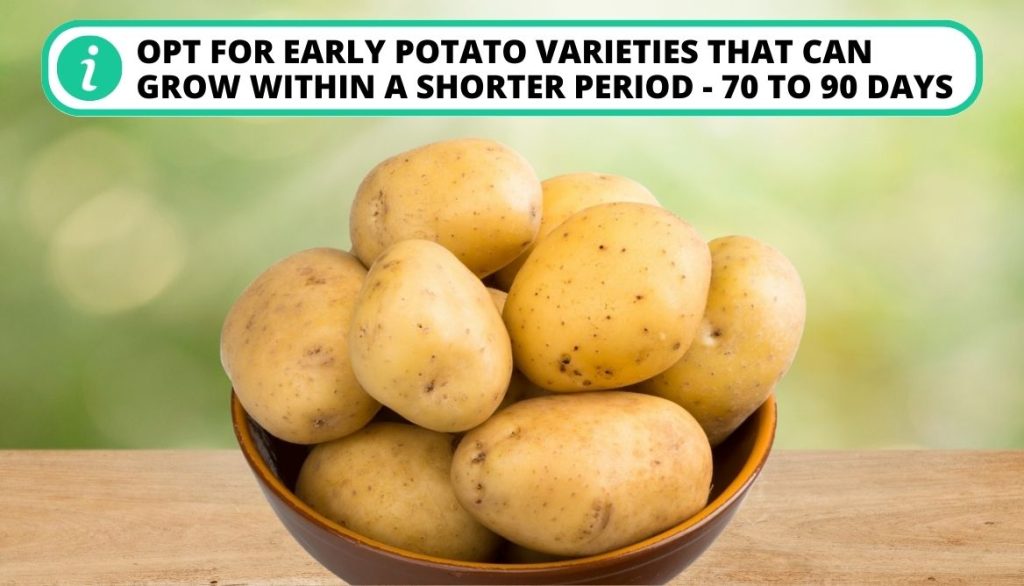
2. Soil Temperature
Soil temperature is another significant factor to consider when planting late. Using a soil thermometer to check the soil before planting is encouraged.
- The ideal soil temperature range for planting potatoes is between 45°F (7°C) and 55°F (13°C).
- It’s important to note that soil temperatures below 40°F (4°C) can delay sprouting seed potatoes, while temperatures above 60°F (15°C) can cause premature sprouting and may result in reduced tuber yields.
- But you can use techniques like pre-warming the soil or using protective covers to create a more favorable soil temperature for germination and growth.
3. Average First Frost
The first frost date marks the end of the planting season and can severely impact potato plants’ growth. If you plant potatoes that require a longer growing season too close to the first frost, they may not have sufficient time to mature and produce larger potatoes.
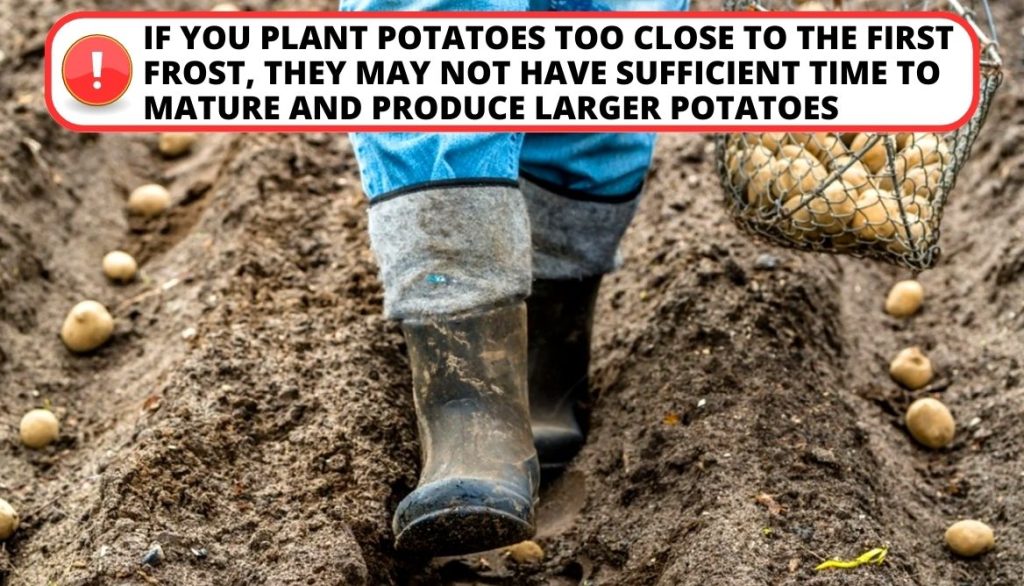
Determining the average first frost date and counting backward is a useful technique to know the optimal planting time for your crop. Here’s a step-by-step guide on how you can do this:
- Identify your location.
- Research the average first frost date for your area.
- Count backward from the first frost date based on the potato variety’s maturation period.
- Consider early-season potato varieties with varying maturation times.
- Make adjustments for local conditions such as microclimates and weather variations.
By following these steps, you can determine the optimal planting time for your potatoes, ensuring a successful harvest before the arrival of frost.
4. Climate and Temperature
Assess your local climate and temperature patterns. Potato is a cool weather crop that thrives in temperatures between 60°F and 70°F (15°C to 21°C).
- If your region experiences mild or cooler weather in July or August, there may still be a window of opportunity for successful potato cultivation.
- However, in areas with warm climates or where temperatures consistently exceed 80°F (27°C), it becomes more challenging to grow potatoes due to heat stress and poor tuber growth.
5. Mulch Your Potatoes
When planting late, the soil is warmer, and mulching can help keep it cool, preventing premature sprouting of the potatoes.
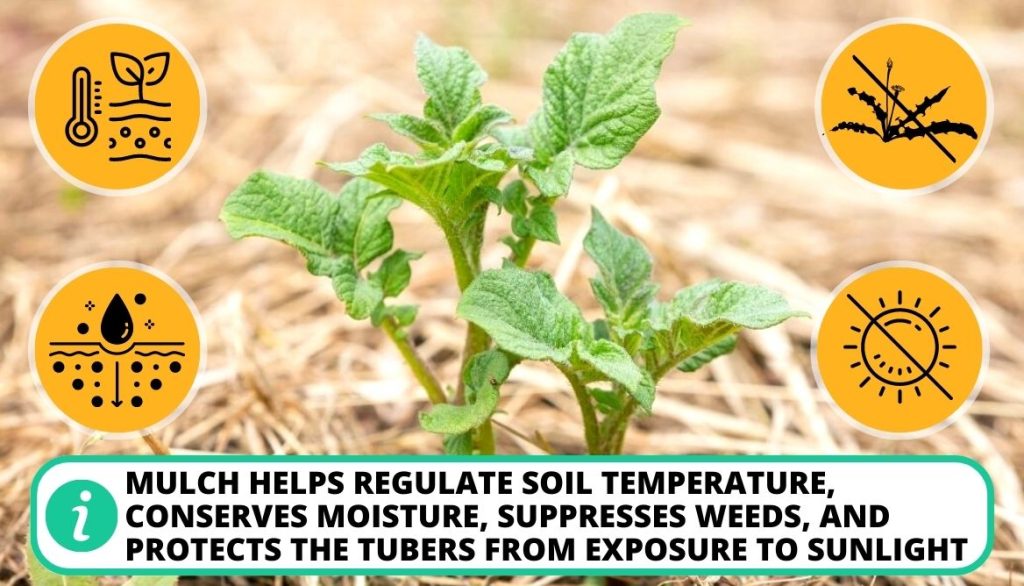
- Mulch helps regulate soil temperature, conserves moisture, suppresses weeds, and protects the tubers from exposure to sunlight.
- Apply a layer of mulch around the base of the plants, ensuring it is a few inches thick, but not directly touching the stems.
6. Water Your Potatoes
Late-planted crops often face higher temperatures and increased evaporation rates, leading to dry soil conditions.
- Consistent and adequate watering is necessary to keep the plants hydrated and ensure healthy tuber development.
- It’s important to water deeply, ensuring the moisture reaches the root zone. However, avoid overwatering, as it can lead to rot or disease issues.
- Regularly monitor soil moisture levels and adjust your watering schedule accordingly.
7. Protection From Heat
Implement measures to protect potato plants from excessive heat. Consider providing shade or using shade cloth to shield the plants during the hottest parts of the day.
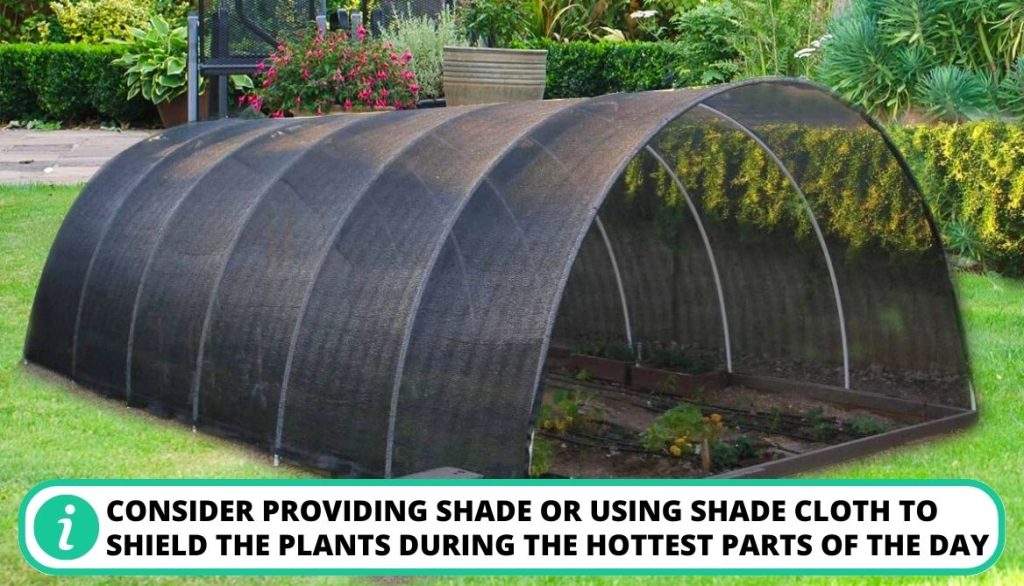
8. Pest And Disease Management
Stay vigilant against pests and diseases, as late-planted potatoes may be more susceptible. Regularly inspect plants for signs of pests like potato beetles or diseases like blight. Implement integrated pest management practices and use appropriate organic or targeted pesticides when necessary.
How To Harvest Potatoes
Potatoes usually get ready for harvesting two to three weeks after the plants have stopped flowering when the foliage turns yellow and begins to fall back.
Use a garden fork or shovel to gradually remove the soil surrounding the potato plants before harvesting mature potatoes. When doing this, take care not to harm the mature potatoes. Here are the steps to follow:
- Choose a dry day for harvesting as wet soil can make the process more difficult and increase the chances of damaging the potatoes.
- Start digging alongside the row of potato plants, keeping a distance of about 12 inches from the base of the plants. Dig deep enough to lift the entire plant, exposing the tubers.
- Carefully lift the potato plants from the ground, avoiding any rough handling that may cause bruising or cuts on the tubers.
- Inspect the harvested potatoes, removing any damaged or diseased ones. Set aside the healthy ones for storage or immediate use.
- Let the harvested potatoes dry for a few hours in a well-ventilated and cool area. This helps the thin skin toughen and reduces the risk of rot during storage.
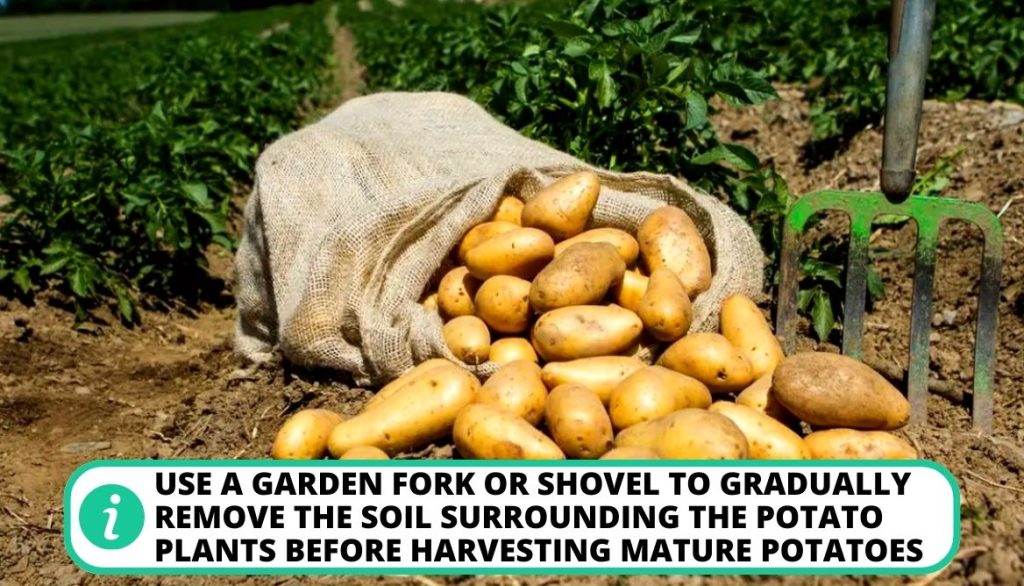
How To Store Your Potatoes After Harvesting
Storing potatoes properly is crucial to prevent sprouting and spoilage. Here are the steps to store potatoes effectively:
- Temperature: Store potatoes in a cool environment between 40 and 50 degrees Fahrenheit.
- Darkness: Keep potatoes in a dark location to avoid the development of green patches. Protect them from direct sunlight or artificial light sources.
- Dryness: Store potatoes in a dry and well-ventilated area to prevent moisture buildup. Avoid plastic bags and use breathable containers, baskets, or mesh bags.
- Curing (optional): If storing for an extended period, consider curing freshly harvested potatoes in a warm area of 70 to 80 degrees Fahrenheit and a humid location for around 10 days to heal injuries and toughen the skin.
- Regular inspection: Check stored potatoes periodically for spoilage, sprouting, or rot, and remove any damaged or spoiled potatoes.
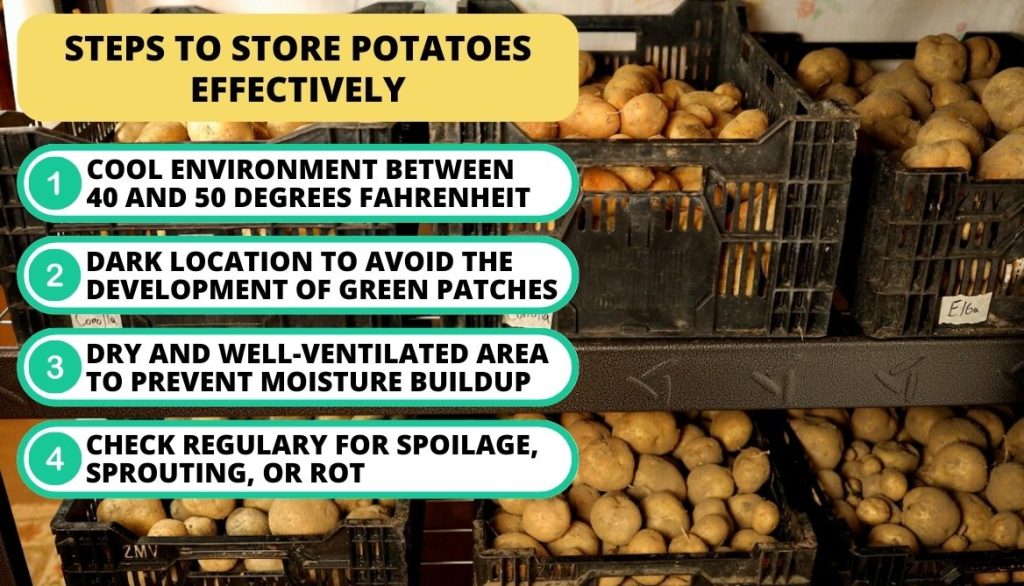
What Happens If You Plant Potatoes Too Late?
If you plant potatoes too late in the season, it can have negative consequences on the growth and yield of the potato plants. But is it too late to plant potatoes in the summer or fall frost?
Here’s the answer to the question above and what you can expect:
Summer Heat
Potato is a spring crop and prefers moderate soil temperature for ideal growth. If you plant when the temperatures are consistently high, it can lead to several issues.
- Slow or stunted growth: New potatoes may struggle to establish themselves and develop properly in the heat. High soil temperature in mid-summer or late summer can inhibit root development and overall plant growth.
- Reduced tuber set: Heat stress can affect flower development and pollination, resulting in fewer or smaller potatoes.
- Increased risk of diseases and pests: Heat-stressed plants are more susceptible to diseases and pests, which can further hinder their growth and yield.
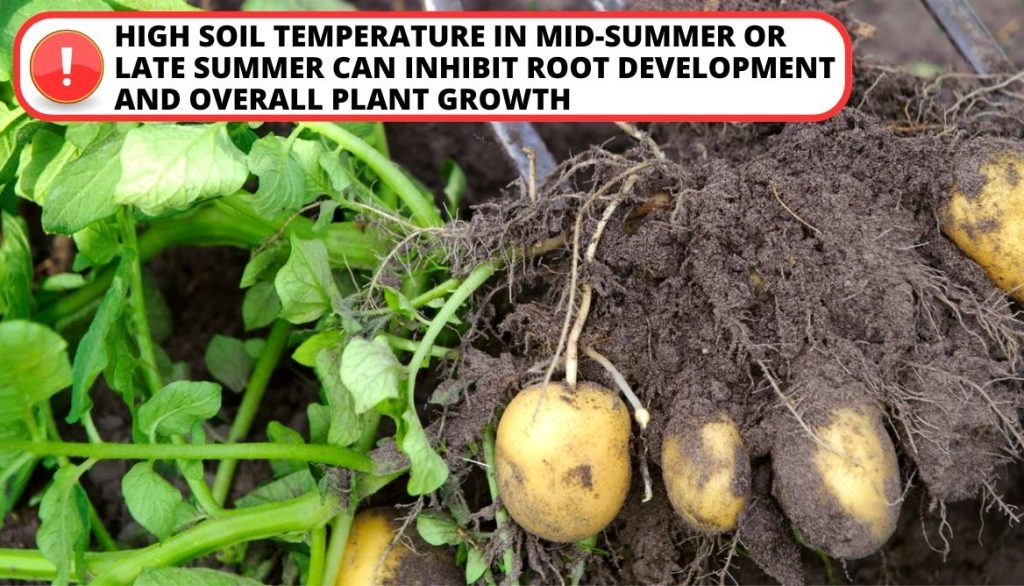
Fall Frost
Depending on the variety of potatoes, growing new potatoes typically takes 3 to 4 months. The following problems may result from planting fall crops too late and the first frost date occurring before the newly planted potatoes reach maturity.
- Reduced yield: An early frost can halt potato growth prematurely in winter months, resulting in smaller tubers or even preventing them from reaching harvestable size.
- Damage to foliage: Cold temperatures can damage or kill the potato plants’ leaves, affecting their ability to photosynthesize and provide energy for tuber development.
- Risk of rot and storage issues: If the frost damages the tubers or causes them to rot, it can lead to storage problems and make them unsuitable for long-term storage.
To avoid these issues, it’s generally recommended to plant new potatoes early enough in the growing season to ensure they have sufficient time to mature before the arrival of excessive heat or frost.
FAQ
How long do potatoes take to grow?
On average, it takes approximately 12 to 16 weeks for potatoes to develop tubers. Some early varieties may mature in as little as 70 days, while late varieties can take up to 140 days or more.
What time of year is best to grow potatoes?
The best date to grow potatoes is typically in the early spring after the soil has warmed up and there is no longer a risk of frost. It’s generally recommended to plant potatoes when the soil temperature reaches around 45 to 55 degrees Fahrenheit (7 to 13 degrees Celsius).
What temperature is too hot for potatoes?
As a general guideline, temperatures above 85 degrees Fahrenheit (29 degrees Celsius) can be considered too hot for potatoes. In hot conditions, potato plants may experience slow growth, reduced tuber set, and an increased risk of diseases and pests.
Conclusion
Determining the right time to plant potatoes requires careful consideration of factors such as frost dates, days to maturity, heat tolerance, and regional recommendations. While mid-April is ideal for planting, it is still possible to plant potatoes in late April, July, or August with proper planning.
Late plantings may face challenges like heat stress and shorter growing seasons, but by choosing early potatoes varieties, monitoring soil temperature, and providing adequate care, a successful harvest is still possible.
Have you ever planted potatoes later in the growing season? Leave your answer in the comment section, Thank you.
- How to Get Potatoes to Sprout Eyes: Detailed Growing Guide with 3 Options - July 31, 2023
- Weight of a Medium Potato: Revealed in Detailed Guide - July 29, 2023
- Maris Piper Potatoes: 9 Substitutes You Should Know About - July 27, 2023
Hello! I’m Jessica Zander, a garden coach and consultant based in the Boston area (zone 6b), offering virtual consultations across the country and Canada.
I’ve been passionate about gardening since the early 1990s, and in 2022, I launched You Can Do It Gardening to empower individuals to feel more confident in their gardening endeavors.
Following a 30-year career in nonprofit finance and operations, I transitioned out of that field in mid-June of 2023 due to the growing demand for coaching services. Interestingly, my years of presenting financial statements to boards and finance committees proved to be valuable experience for teaching people about gardening! I enjoy sharing skills, providing guidance and suggestions, and collaborating efficiently with clients to make significant improvements to their outdoor spaces, both small and large. I also regularly teach at the Arlington Continuing Education and Cambridge Adult Education.
My approach is direct and practical, akin to Mary Poppins, but tailored to your garden. Clients find satisfaction in saving money and taking pride in their own gardening achievements.

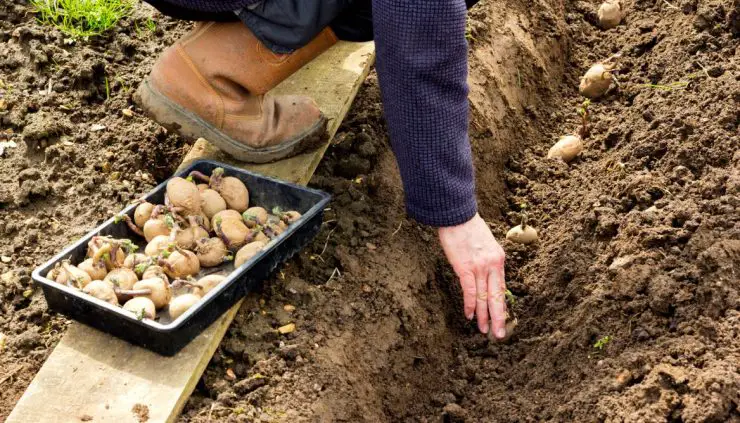

Add comment